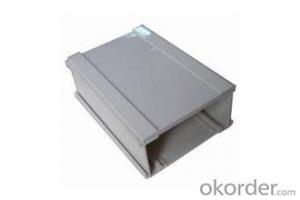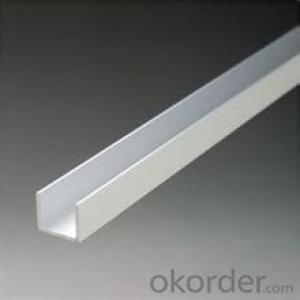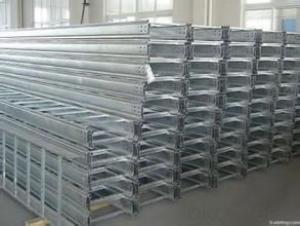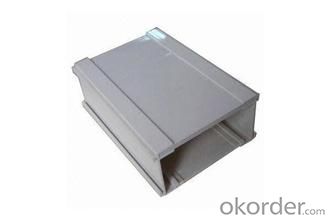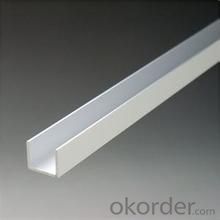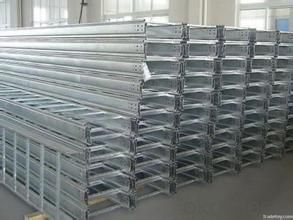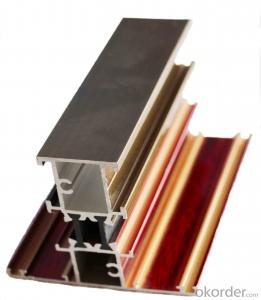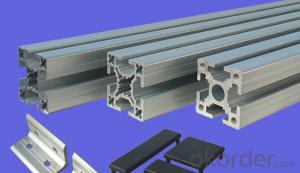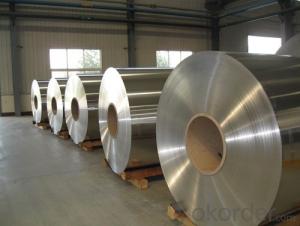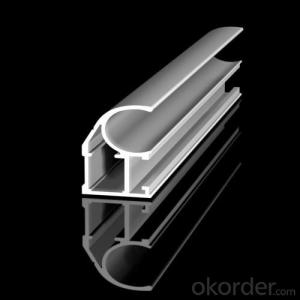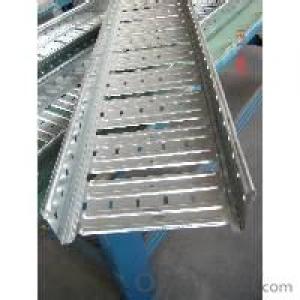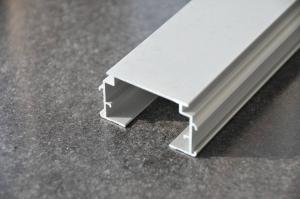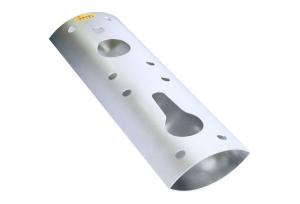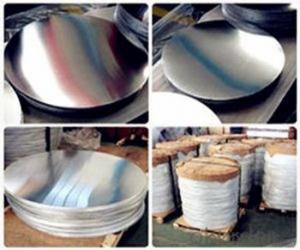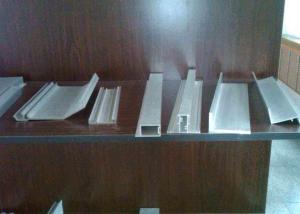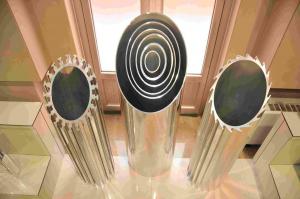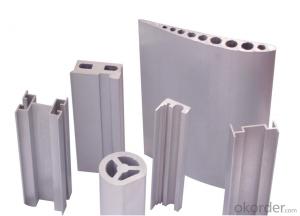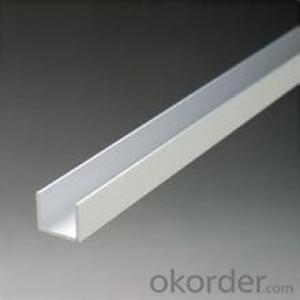Aluminum Extrusion Profiles Section H Cable Tray
- Loading Port:
- China Main Port
- Payment Terms:
- TT OR LC
- Min Order Qty:
- -
- Supply Capability:
- -
OKorder Service Pledge
OKorder Financial Service
You Might Also Like
Aluminium is a relatively soft,durable, lightweight, ductile and malleablemetal with appearance ranging from silvery to dull gray,depending on the surface roughness. It is nonmagnetic and does not easilyignite. A fresh film of aluminium serves as a good reflector (approximately92%) of visible light and an excellent reflector (as much as98%) of medium and far infrared radiation. The yield strength of pure aluminium is 7–11 MPa,while aluminium alloys have yield strengths ranging from200 MPa to 600 MPa. Aluminium has about one-third the density and stiffnessof steel. It iseasily machined,cast, drawn and extruded.
Alu Profile:
Material | Alloy 6063,6061,6005or according to customer’s choice |
Temper | T3, T4, T5, T6 |
Surface | Anodize, electrophoresis, powder coating, PVDF coating, wood grain painting, matted, etc. |
Length | Coating 6.5 meters, Anodizing 6.5 meters, Mill finish 5 meters |
Application | Industrial, electrical equipment(TV set, air conditioner, refrigerator, computer), decoration,construction, transportation |
Custom Made | We can package following with customer's request. |
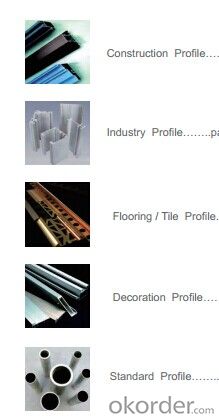
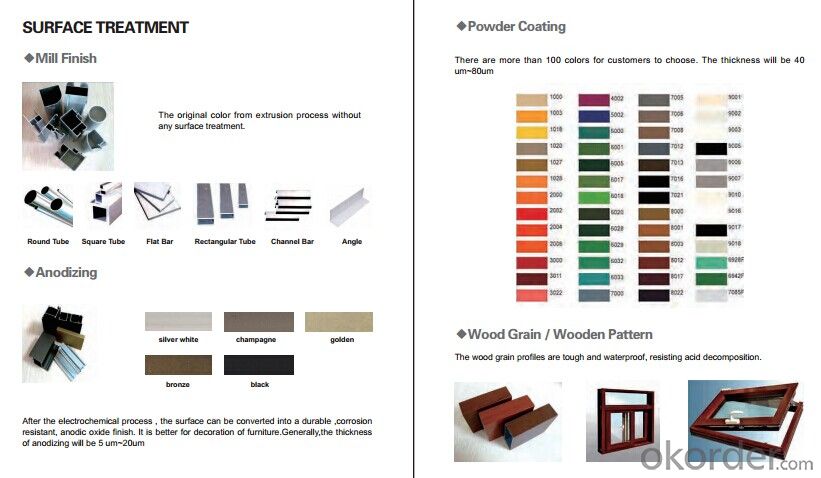
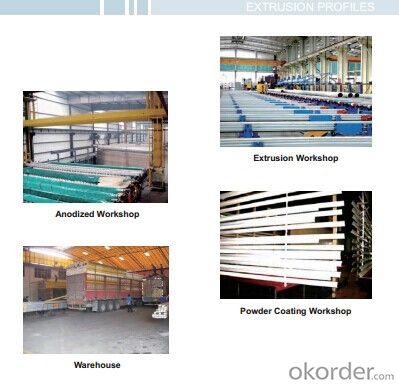
FAQ:
1. What is the form of payment?
Normally 30% TT, L/C at sight
2. Type of quotation?
FOB, CFR, CIF
3. Port of loading?
Guangzhou/Shenzhen port
4. Delivery time?
15-20 days after client’s deposit
- Q: It is now the most urban rail trains, as well as the manufacturing methods and processes of large parts profiles used in the manufacture of CRH3 type emus.
- According to the technical requirements of the components, the process is as follows: aluminum ingot - Dissolution alloy ratio - into rod material - extrusion forming - aging - surface treatment - cut by component size - finished product!
- Q: What are the different finishing options available for aluminum profiles?
- The different finishing options available for aluminum profiles include anodizing, powder coating, painting, polishing, brushing, and sandblasting. These options allow for customization in terms of color, texture, and durability. Anodizing provides a protective layer and can be done in various colors. Powder coating offers a wide range of colors and a durable finish. Painting allows for custom colors and designs. Polishing creates a smooth and reflective surface. Brushing creates a brushed metal look. Sandblasting adds texture and can create a matte or satin finish. Overall, these finishing options enhance the aesthetics and functionality of aluminum profiles.
- Q: What are the different machining techniques used on aluminum profiles?
- Some of the different machining techniques used on aluminum profiles include milling, drilling, turning, grinding, and tapping. These processes help shape and refine the aluminum profiles to meet specific design requirements and achieve desired dimensions and surface finishes.
- Q: What are the fire safety regulations for aluminum profiles?
- Fire safety regulations for aluminum profiles vary depending on the specific jurisdiction and the intended use of the profiles. However, there are several general principles and guidelines commonly followed to ensure fire safety when using aluminum profiles. 1. Fire resistance ratings: Aluminum profiles undergo standardized testing procedures to determine their fire resistance rating. This rating indicates how long the profiles can withstand exposure to fire before their structural integrity starts to weaken. 2. Flame spread rating: The flame spread rating assesses how quickly flames can spread along the surface of aluminum profiles. A lower flame spread rating indicates a slower flame spread rate, reducing the risk of fire spread in case of an incident. 3. Coating and surface treatments: The fire safety of aluminum profiles can be affected by their surface treatment and coating. Certain coatings or finishes can provide additional fire resistance properties. For example, fire-retardant coatings may be applied to improve fire resistance or inhibit flame spread. 4. Installation and use: Adhering to fire safety regulations involves properly installing and using aluminum profiles. This includes complying with building codes and standards, ensuring that profiles maintain their fire resistance properties during installation, and avoiding situations that could compromise their fire safety. 5. Regular maintenance and inspections: Regular maintenance and inspections are important to ensure that aluminum profiles remain compliant with fire safety regulations. This involves checking for any damage or deterioration that could affect their fire resistance properties and taking appropriate measures to address identified issues. To ensure compliance with specific requirements for aluminum profiles in a particular jurisdiction, it is crucial to consult local fire safety regulations and building codes. Seeking guidance from relevant authorities or fire safety professionals is also recommended.
- Q: This question asks for a comparison between aluminum profiles and other materials concerning cost and availability.
- <p>Aluminum profiles are generally cost-effective and widely available compared to other materials. They are less expensive than materials like stainless steel and titanium, making them a popular choice for various applications. Aluminum is also readily available in the market due to its high demand in industries such as construction, automotive, and aerospace. Additionally, aluminum has a lower density, which means it's lighter and easier to transport and handle, further reducing costs. However, the cost and availability can vary depending on market conditions, geographical location, and specific alloy types.</p>
- Q: Are aluminum profiles suitable for material handling equipment?
- Yes, aluminum profiles are suitable for material handling equipment. Aluminum is a lightweight and durable material that offers excellent strength-to-weight ratio, making it ideal for applications that require easy maneuverability and lifting capacities. Additionally, aluminum profiles can be easily customized and assembled, allowing for versatile designs that can meet various material handling needs.
- Q: This question asks if aluminum profiles can be utilized for constructing interior partitions or walls within a building.
- <p>Yes, aluminum profiles can be used for interior partitions or walls. They are lightweight, durable, and offer excellent resistance to corrosion. Aluminum profiles are easy to install and can be used in various configurations, making them suitable for both residential and commercial spaces. They also provide good thermal insulation and can be combined with other materials like glass or fabric for aesthetic and functional purposes.</p>
- Q: Are aluminum profiles suitable for use in architectural lighting fixtures?
- <p>Yes, aluminum profiles are commonly used for architectural lighting fixtures due to their durability, lightweight nature, and excellent heat dissipation properties. They offer design flexibility and can be easily shaped and machined to fit various lighting designs. Additionally, aluminum's resistance to corrosion makes it ideal for both indoor and outdoor lighting applications.</p>
- Q: What are the minimum thickness specifications for aluminum alloy door and window profiles?
- 1, aluminum alloy doors and windows, curtain wall profiles, thickness GB8478, 2008, "aluminum alloy window" 5.1: aluminum alloy window force components should be determined by test or calculation. The minimum measured wall thickness shall be greater than 1.4mm without the surface treated profiles.
- Q: What do you mean by "80868 fingers" of aluminum alloy door and window?
- Model bar, just like stainless steel 304, which is defined as the amount of metal.
Send your message to us
Aluminum Extrusion Profiles Section H Cable Tray
- Loading Port:
- China Main Port
- Payment Terms:
- TT OR LC
- Min Order Qty:
- -
- Supply Capability:
- -
OKorder Service Pledge
OKorder Financial Service
Similar products
Hot products
Hot Searches
Related keywords
